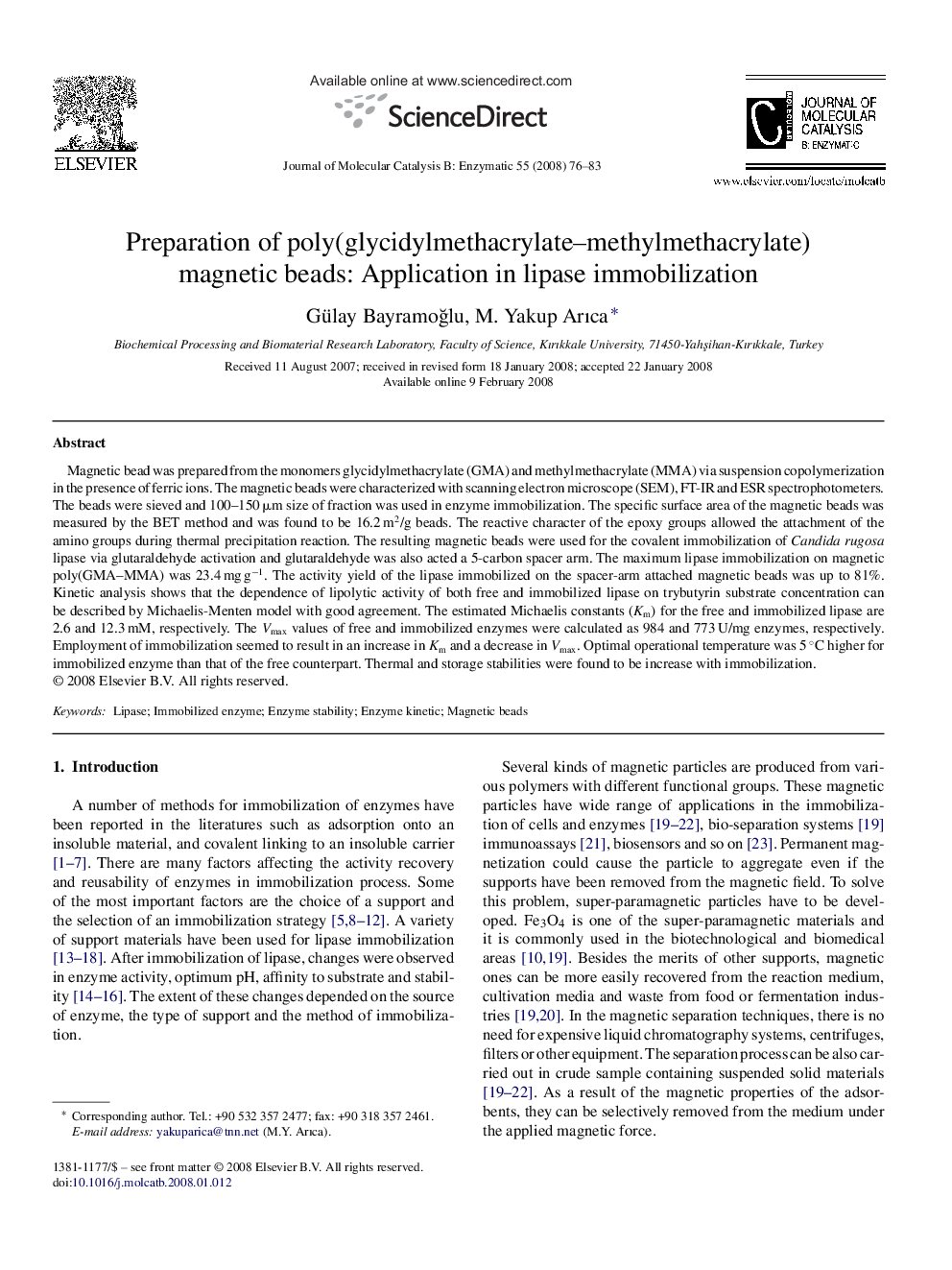| Article ID | Journal | Published Year | Pages | File Type |
|---|---|---|---|---|
| 70800 | Journal of Molecular Catalysis B: Enzymatic | 2008 | 8 Pages |
Magnetic bead was prepared from the monomers glycidylmethacrylate (GMA) and methylmethacrylate (MMA) via suspension copolymerization in the presence of ferric ions. The magnetic beads were characterized with scanning electron microscope (SEM), FT-IR and ESR spectrophotometers. The beads were sieved and 100–150 μm size of fraction was used in enzyme immobilization. The specific surface area of the magnetic beads was measured by the BET method and was found to be 16.2 m2/g beads. The reactive character of the epoxy groups allowed the attachment of the amino groups during thermal precipitation reaction. The resulting magnetic beads were used for the covalent immobilization of Candida rugosa lipase via glutaraldehyde activation and glutaraldehyde was also acted a 5-carbon spacer arm. The maximum lipase immobilization on magnetic poly(GMA–MMA) was 23.4 mg g−1. The activity yield of the lipase immobilized on the spacer-arm attached magnetic beads was up to 81%. Kinetic analysis shows that the dependence of lipolytic activity of both free and immobilized lipase on trybutyrin substrate concentration can be described by Michaelis-Menten model with good agreement. The estimated Michaelis constants (Km) for the free and immobilized lipase are 2.6 and 12.3 mM, respectively. The Vmax values of free and immobilized enzymes were calculated as 984 and 773 U/mg enzymes, respectively. Employment of immobilization seemed to result in an increase in Km and a decrease in Vmax. Optimal operational temperature was 5 °C higher for immobilized enzyme than that of the free counterpart. Thermal and storage stabilities were found to be increase with immobilization.
